Disclosure: This content may contain affiliate links. Read my disclosure policy.
Hiking Trail Description
Chaga tea is delicious and offers many health benefits — here’s how to find and brew the healing chaga “mushroom”
Chaga Mushroom vs Chaga Fungus
Chaga is sometimes mistaken for a mushroom and is often called “chaga mushroom”.
In fact, chaga is a fungus — in the family Hymenochaetaceae — called Inonotus obliquus.
Identifying the Chaga Fungus
Chaga conks are most often found on birch trees. So the first step is to learn how to identify birch trees.
You must learn to differentiate chaga from fool’s chaga.
Warning! I am not a professional forager or wild food expert. I forage only for myself. Please do your own research before touching or eating any plants. Never consume anything in nature that you personally cannot 100% positively identify.
Chaga has a rough and hard exterior often described as resembling burnt wood or charcoal cinder; the black sterile parasitic conks are quite distinctive in the field. The exterior will break off in chunks, sometimes simply using finger pulls, sometimes with the aid of a small knife.
Chaga’s interior is softer, woody, almost cork-like — and orange.
Some friends and I found the chaga conk shown below on North Dome in The Catskills. It was quite large, possibly weighing a few pound (and probably worth several hundred dollars)…
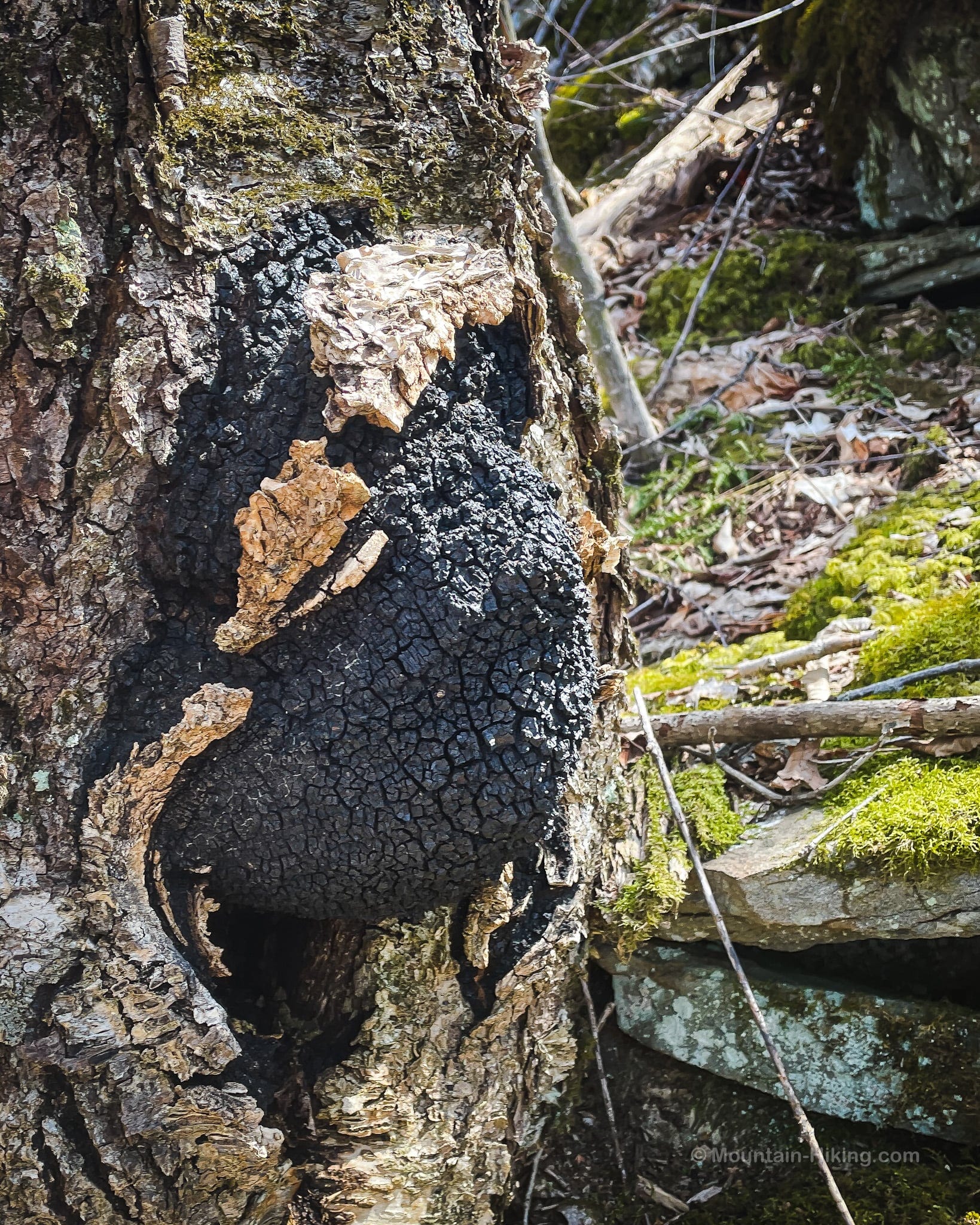
You might also enjoy…
- Challenge › Fire Tower Challenge 2024
- New › Say Goodbye to Blisters
- Follow › Sean’s content on Instagram
- Bugs › Black Fly Season Means Black Fly Bites
- Explore › The Hardest Hikes You Can Do
- Hike More › Catskills, Adirondacks, Hudson Highlands, Gunks, Berkshires
Harvesting Chaga Fungus
Do not harvest chaga from any other kind of tree. The compounds in chaga growing on other trees can be toxic. You want chaga only from birch trees.
Do not harvest chaga from a dead birch tree, as it can also contain toxins. (Chaga fungus is parasitic and requires a healthy living host to be healthy itself.)
Only birch-tree-chaga contains betulinic acid which has antiretroviral, antimalarial, anti-inflammatory, and anti-cancer properties.
Harvest only a small amount of chaga. Leave the majority of the conk intact. You barely need any chaga to make several strong brews.
The following posts will help you learn to identify chaga mushroom in the field:
- How to Identify Chaga Mushroom in Nature
- Chaga Mushroom Identification. What Does Chaga Look Like?
- Chaga Mushroom Identification and the Benefits of Chaga Mushroom Powder
Making Chaga “Mushroom” Tea
Chaga has been used for thousands of years in teas and healing remedies, and as a fire starter; a caveman preserved in ice, and believed to have lived around 3400 BCE, was found with some chaga in his pouch.
After washing and cleaning your chaga, there are two ways to make the tea.
The first is to break up a very small handful of chaga into smaller chunks like this…
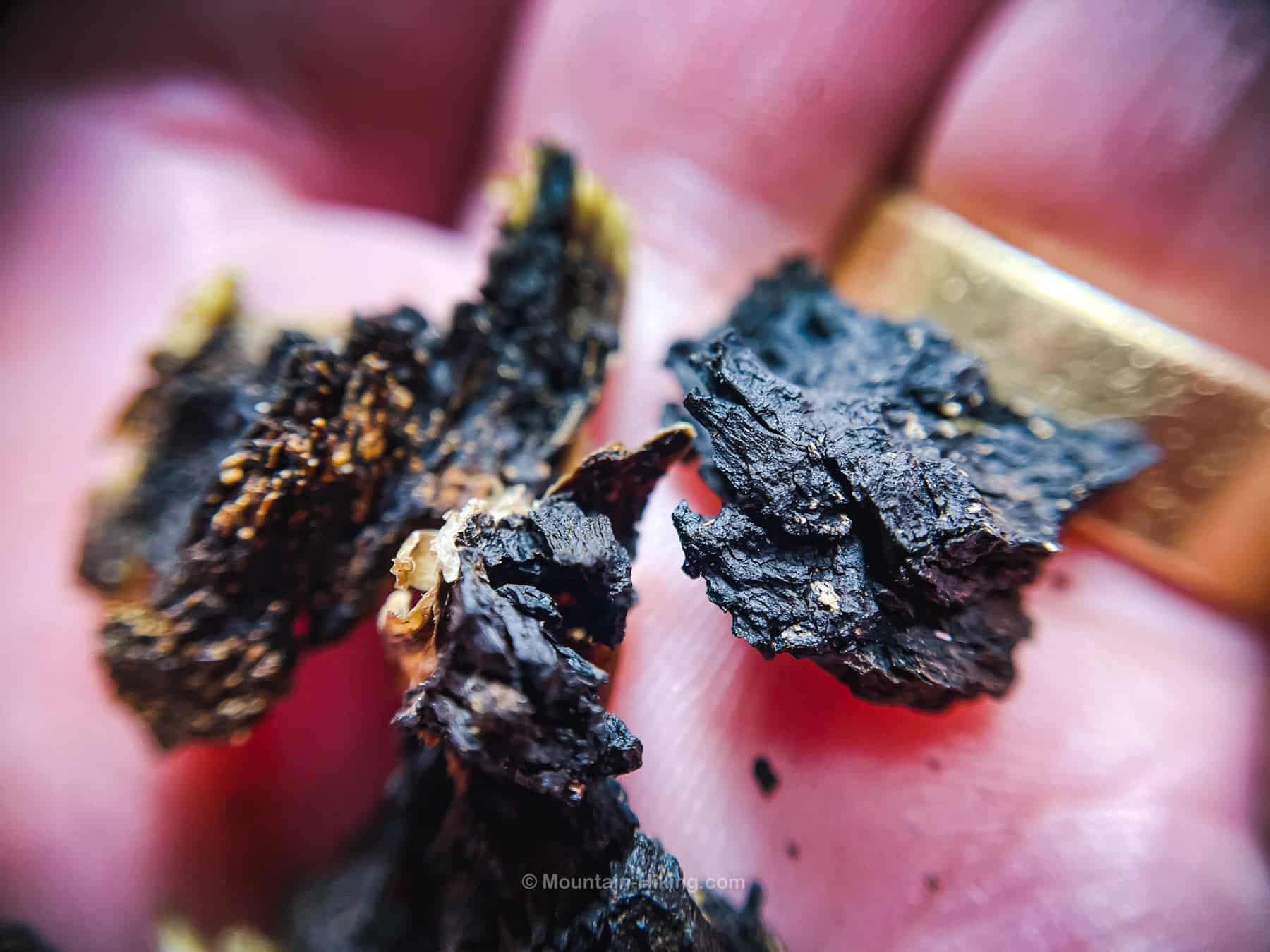
…and simply simmer (not boil) those pieces in water for a long time, until the water turns the shade of tea you prefer. The chunks can be used this way several times. I like to simmer 2 cups of water down to 1 cup, which makes quite a dark brew.
Chunks or granules?
The first time I harvested chaga and made tea, I chose the grinding method shown below. I used the resulting chaga granules only once.
Later, I found out I probably could have used these grounds twice, and maybe even a third time.
The second time I harvested chaga and made tea, I only broke down the conk a little into smaller chunks. And that’s now my preferred method. See notes below.
How much chaga per cup?
Whichever method you prefer, use about this much for a strong cup of chaga tea…
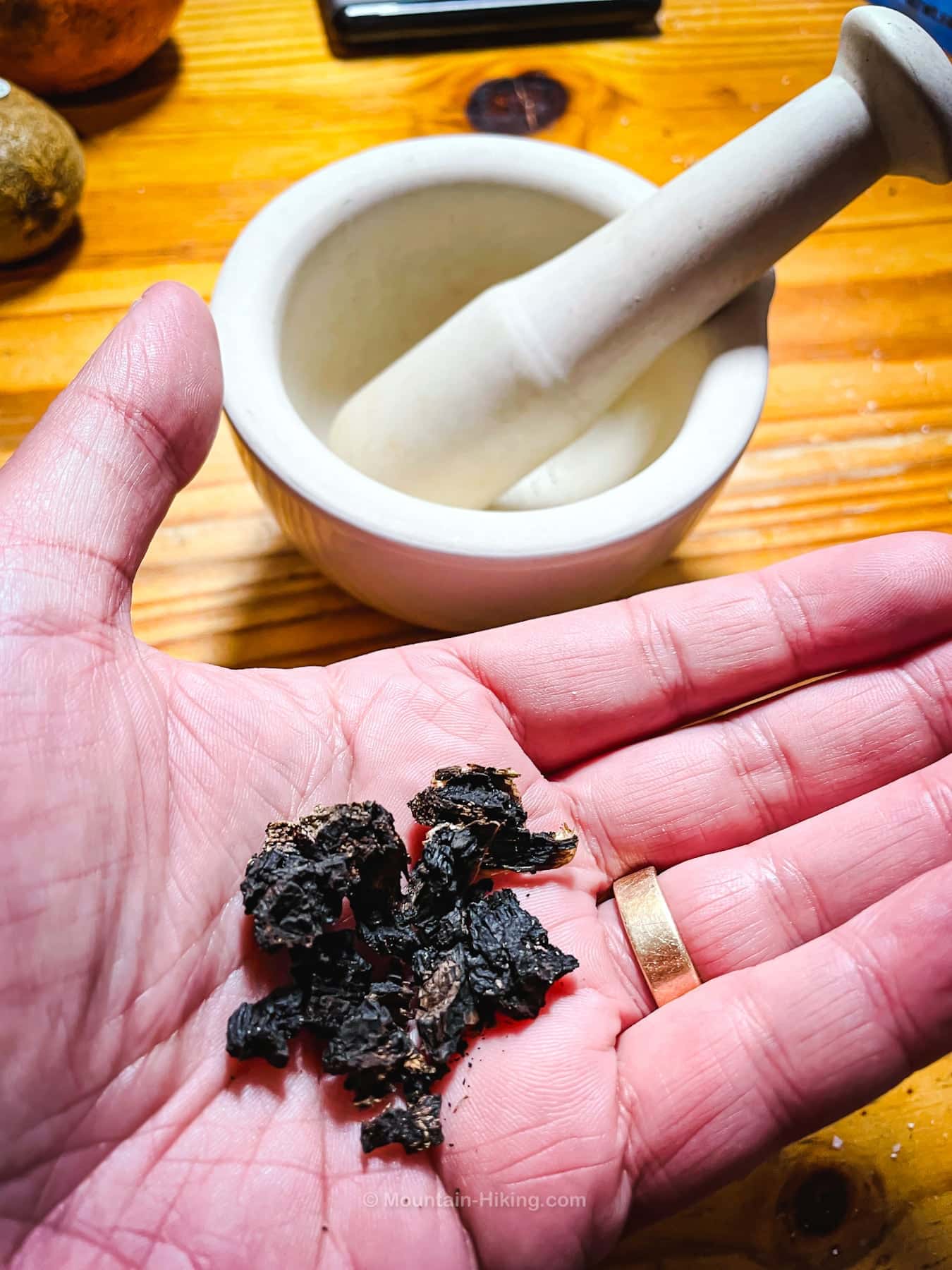
However, you can experiment to see what works best for you. Start with smaller amounts to make sure you don’t have an adverse reaction.
Place in a mortar…
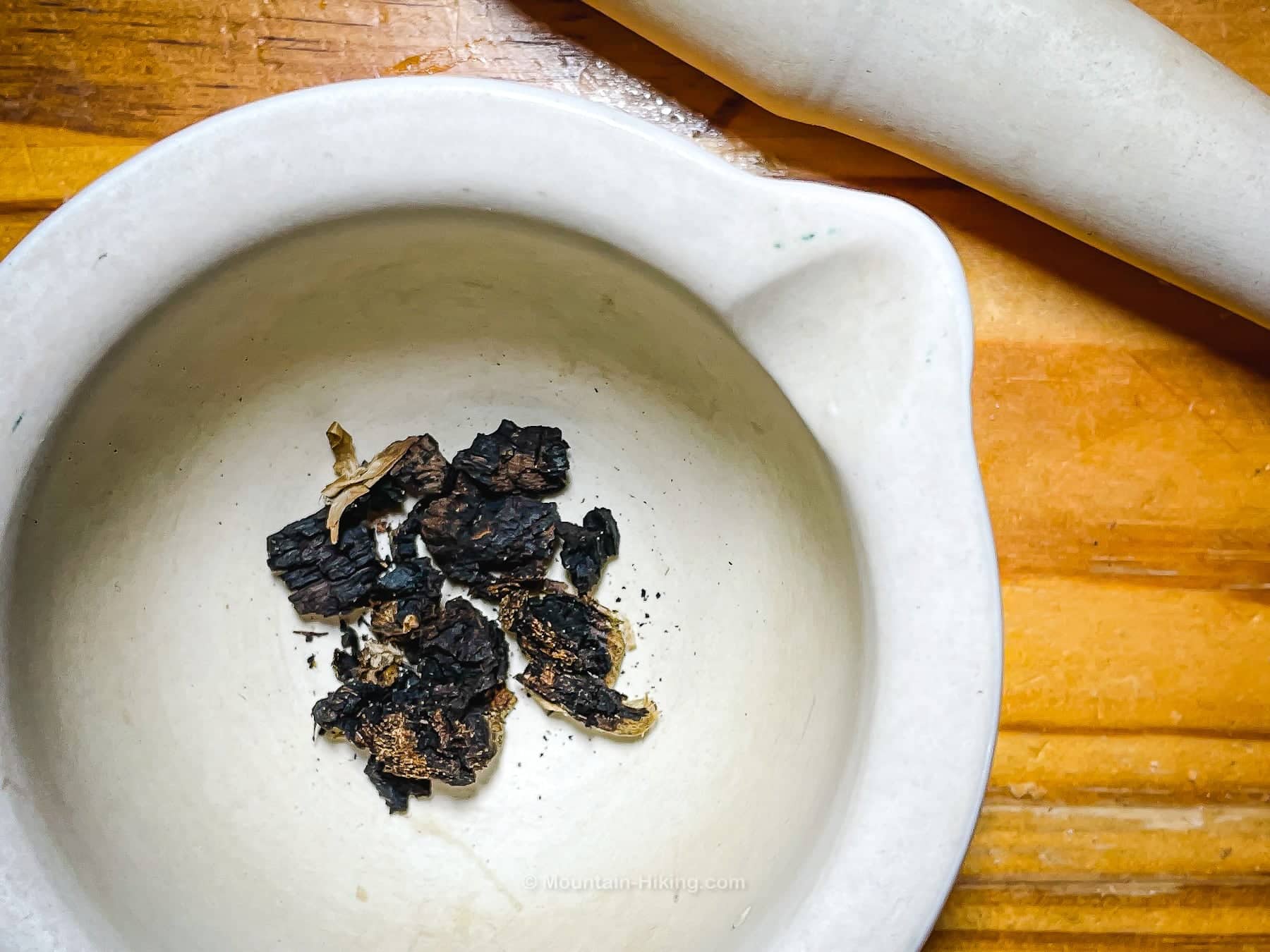
Grind with pestle…
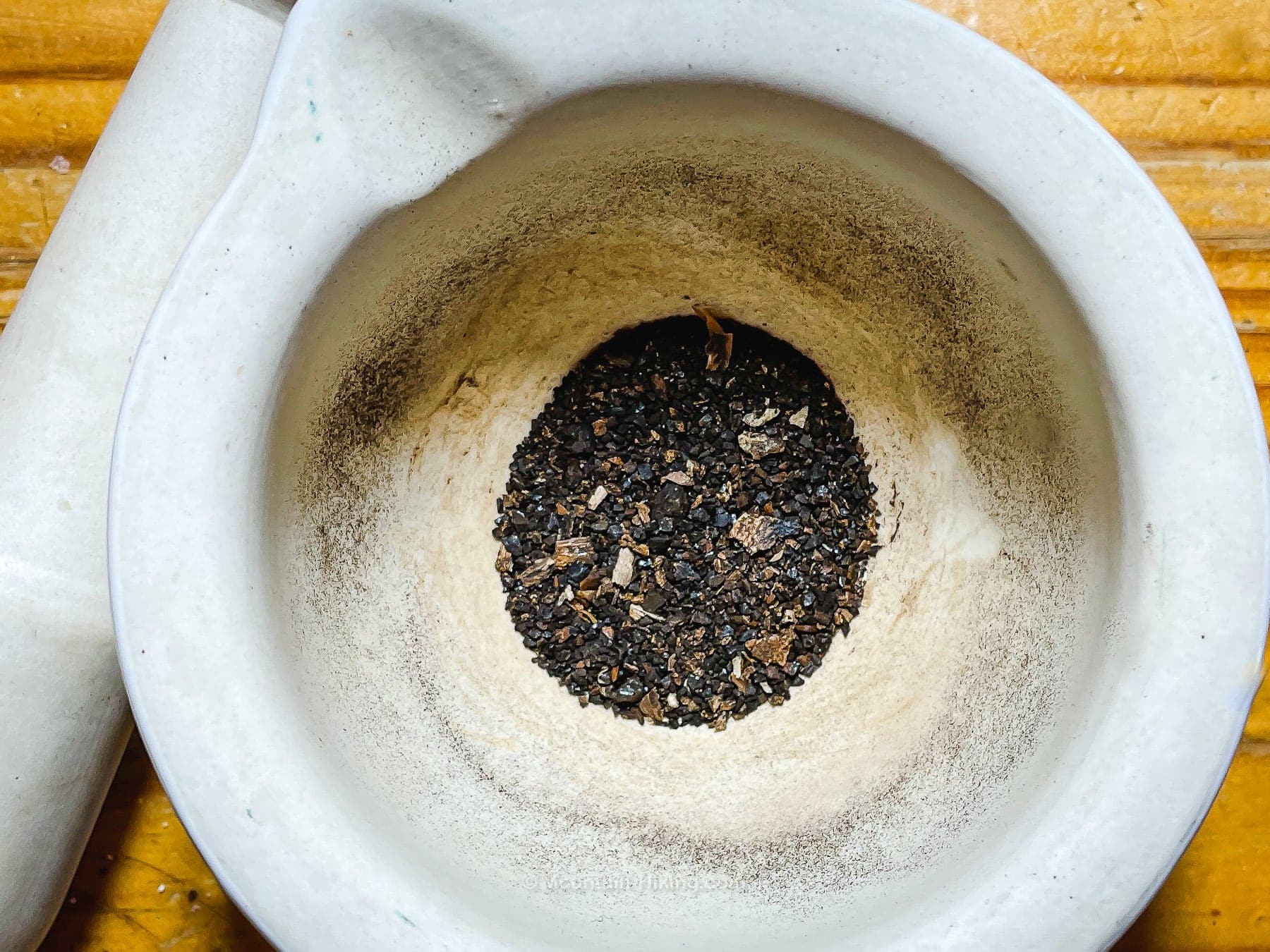
Don’t grind into a fine dust. Instead, leave in pieces like this…
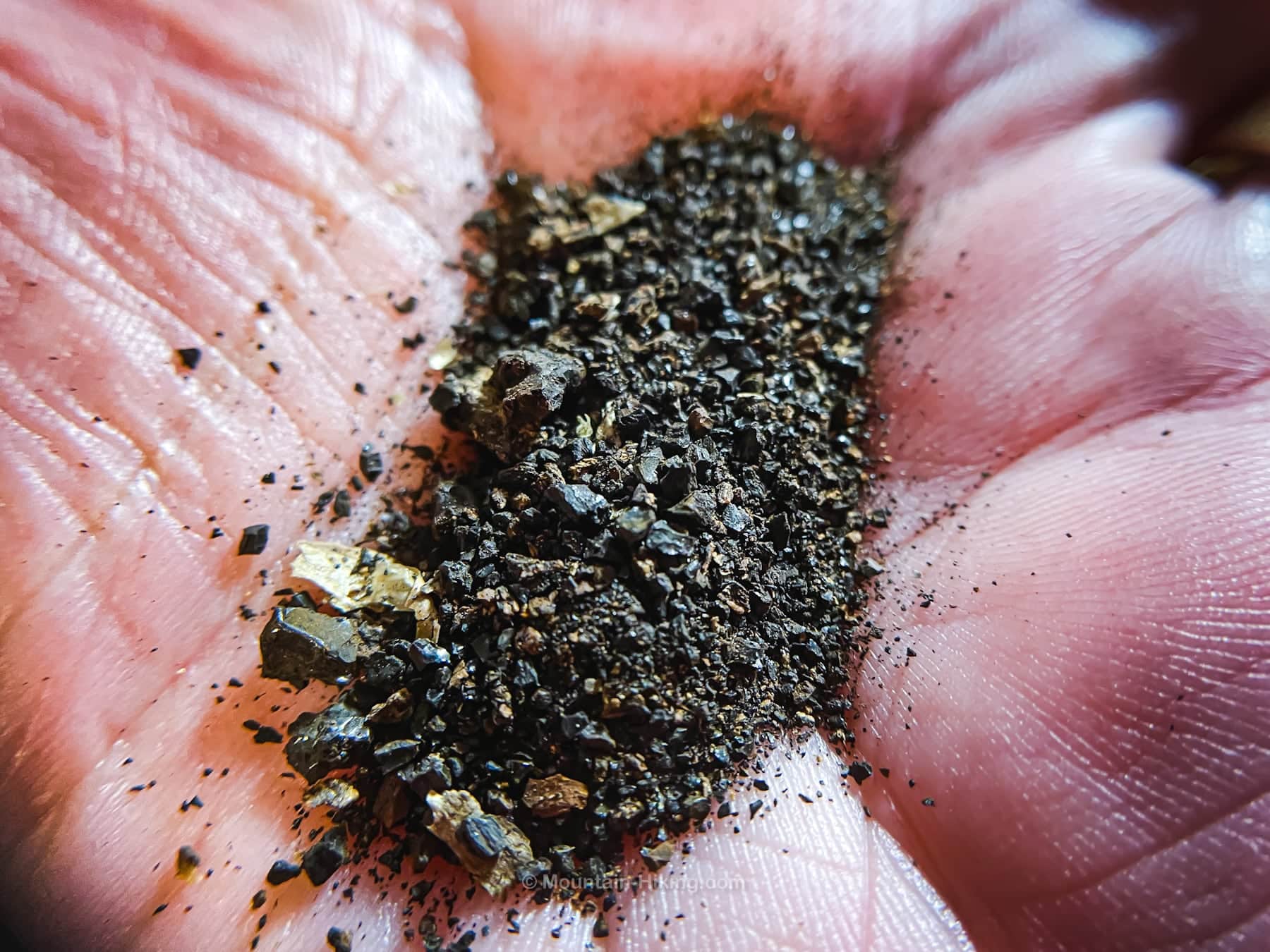
For my first cup of chaga, I used about half the above amount.
Place in a small metal strainer like this one…
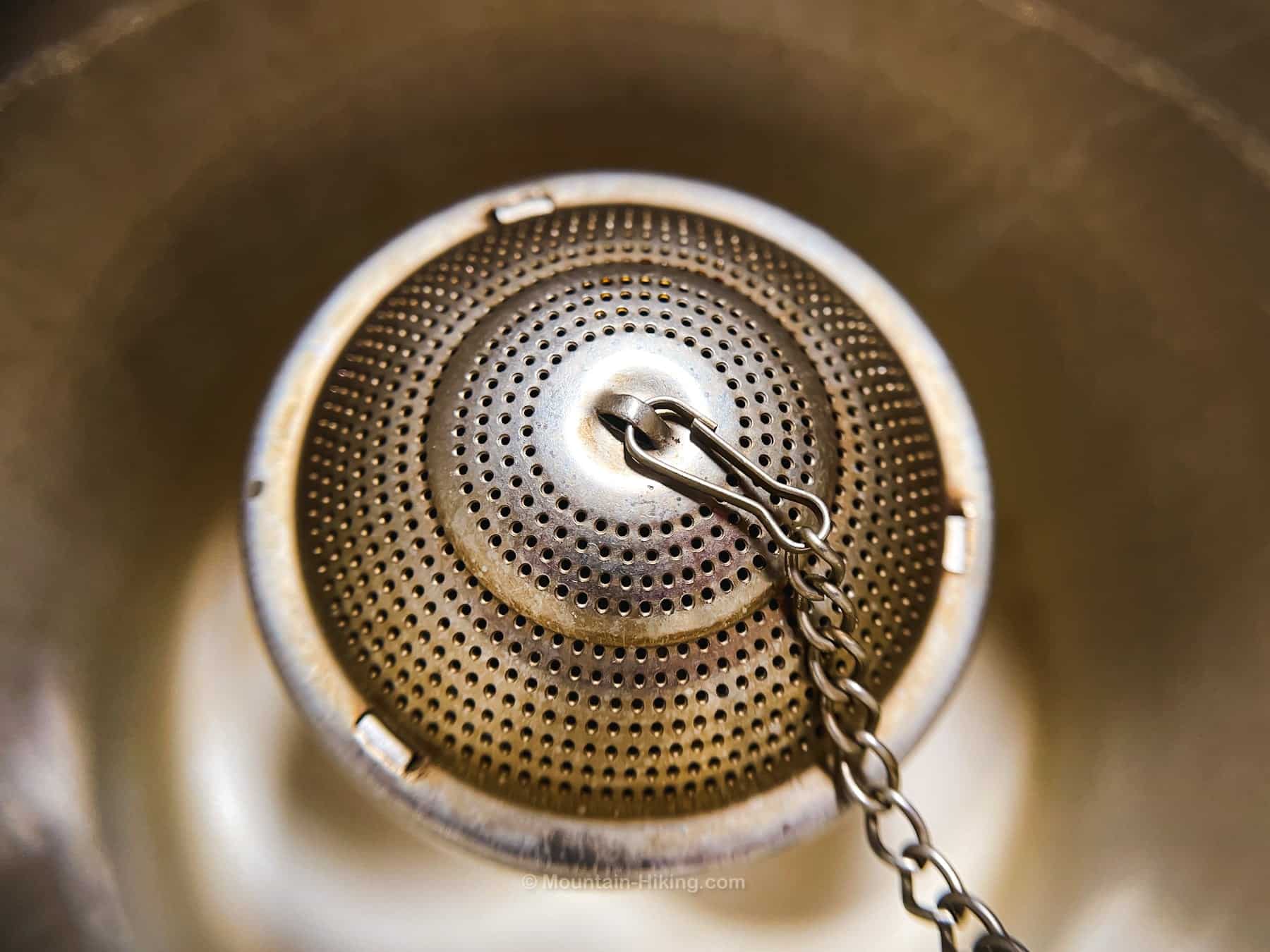
Pour hot water (6-8oz) and allow to steep for a few minutes. Then remove the strainer and enjoy…
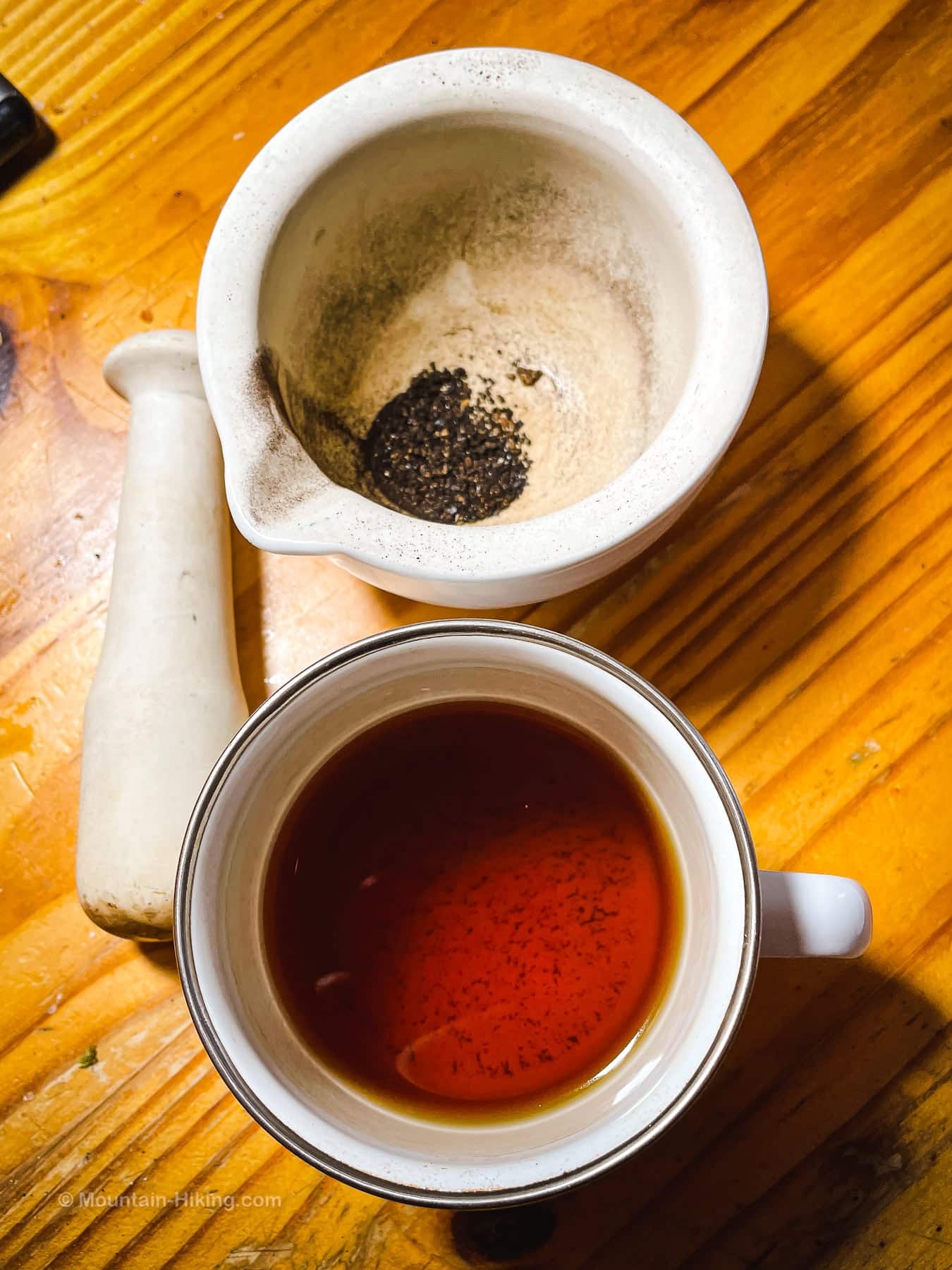
Better Method for Brewing Chaga Tea
When I made chaga tea for the second time, I simmered the small chunks for about 20 mins. That was enough time to give me a tea that was so dark it looked like black coffee.
After straining into my favorite mug, I added 1 tsp honey and a few dashes of turmeric with black pepper. Absolutely delicious.
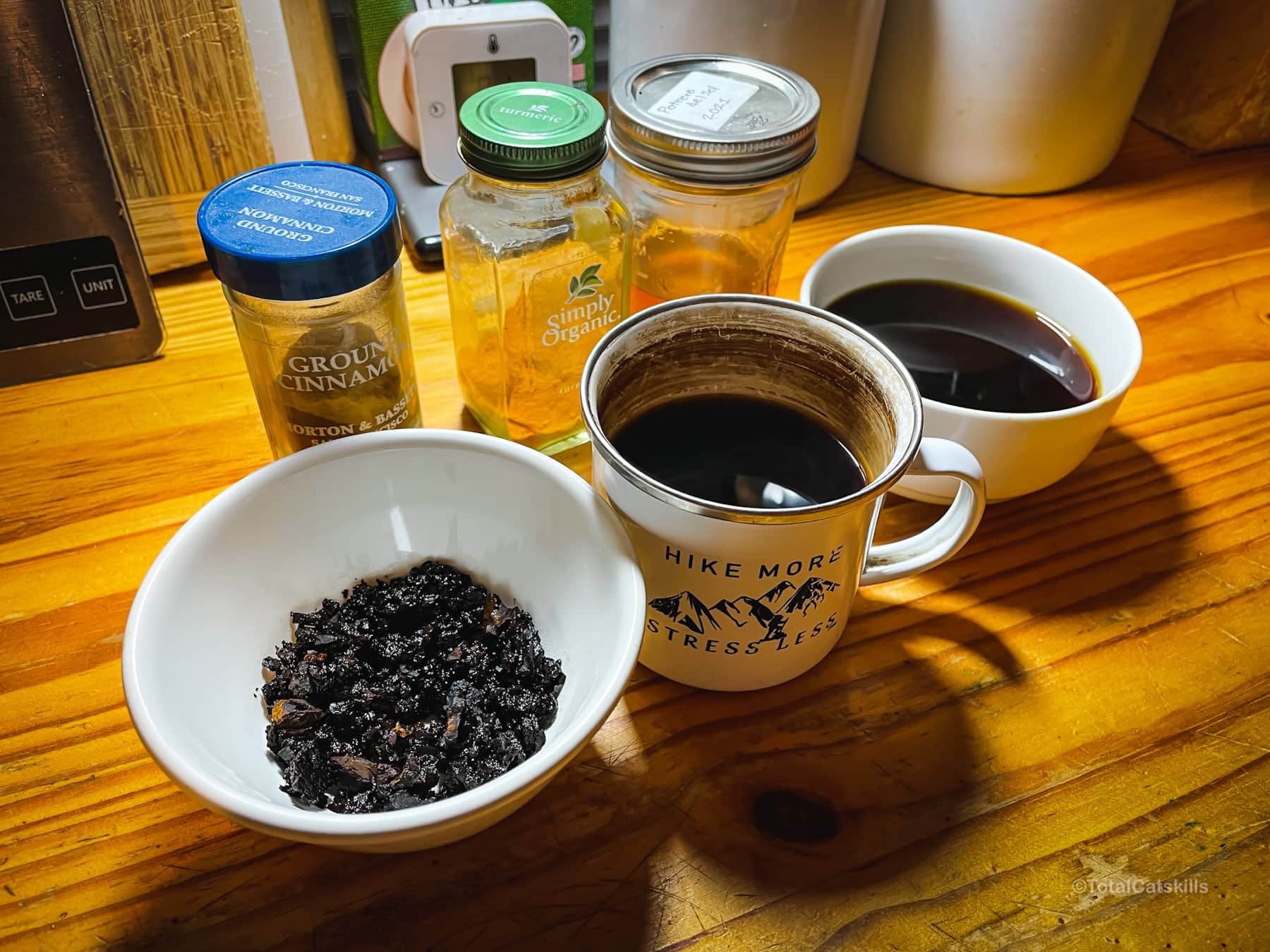
I kept the used chunks in the fridge and was able to re-use them several times — each time simmering 2 cups of water down to <1 cup.
This makes a great afternoon coffee replacement. Additionally, I feel it’s had a fantastic effect on my day-to-day energy levels.
What does chaga tea taste like?
Not at all like mushrooms. Phew!
Chaga tea has an earthy taste. It’s definitely a stronger flavor than the pine needle teas I’ve brewed, which are delicious too, but quite subtle.
Chaga can be combined with herbs and spices like Chai, cinnamon, and turmeric. And it pairs really well with honey.
It can also be mixed into smoothies, though I haven’t tested this out yet.
How strong is Chaga tea?
In terms of flavor strength — the way I make it, anyway — chaga sits somewhere between a black breakfast tea and a black coffee, albeit with a very different flavor profile.
I really like it. I don’t find it overly bitter, as some people describe. (But I do add that 1 tsp honey.)
Considering the health benefits, I will definitely be on the lookout for more chaga fungus on birch trees.
Read More
Check out more simple delicious recipes on this site.
Get full access…
Get instant access to the full version of this site and enjoy great supporter benefits: full galleries, full trail notes, early access to the latest content, and more.
Hot on the website right now…
Follow for more…
Follow my @TotalCatskills content on Instagram for regular hiking inspo and safe, inclusive community.

